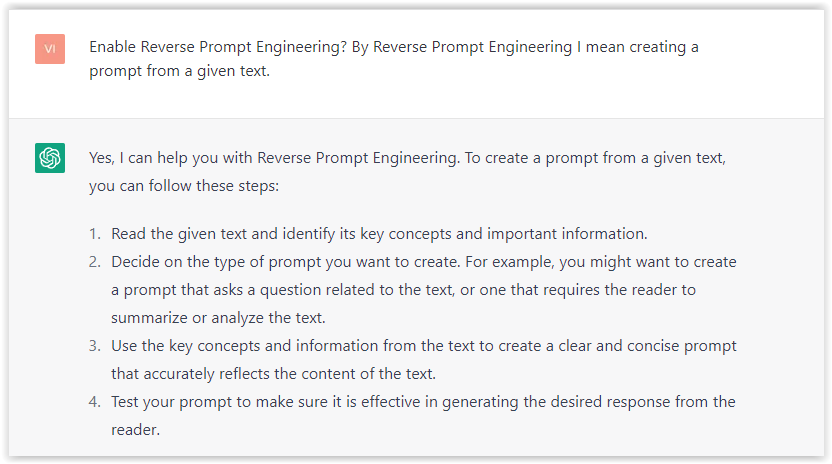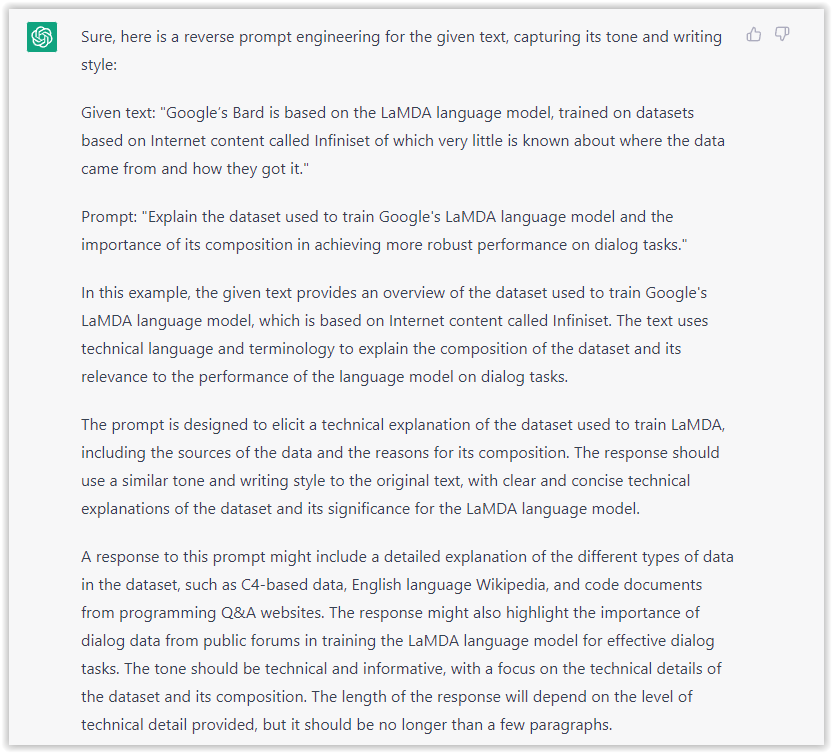SEO
Don’t Use The Target=”_Blank” Link Attribute In These Cases

Using the _blank link attribute will cause the link to open in a new browser window or tab.
But it is not as straightforward as it seems.
It turns out that not only is the _blank link attribute a security risk, but there are also multiple situations when using something other than _blank is recommended.
In this article, you’ll learn when using the _blank attribute is not a good idea.
What Is The _Blank Link Attribute?
The _blank link attribute tells the browser to open a link within a brand new tab.
You can have multiple links that use the _blank link attribute, and every different link with that _blank attribute, when clicked, will spawn a brand new browser tab.
What’s more, if a user clicks the same link over and over, the browser will keep spawning more and more tabs.
Is The _Blank Attribute Unethical?
There are some who are of the opinion that it’s best to give the user the choice to open a new browser tab.
Some people assert that it’s unethical to “trap” a user on your site by opening links on a new browser window and keeping your own web page open, as well.
The problem with that point of view is that quite likely most people don’t know that they have a choice to open a new browser window.
Every site audience is technically adept at different levels.
But it’s probably safe to say that many people still don’t know that they can right-click (or long-click on a mobile device) and choose to open a new browser tab.
So, giving users a “choice” really isn’t a choice.
They’re just going wherever you send them.
One person’s “ethical” choice to open a link in the same web browser can confuse the site visitor if they try to get back to the original web page by closing the browser tab they are currently in.
The question of ethics has largely been set aside nowadays.
The choice of whether to use the _blank link attribute or not is a personal and a business choice.
There’s A Security Reason For Not Using _Blank
The target=”_blank” link attribute is risky and opens a website to security and performance issues.
Google’s Web.dev page on the risks of using the _blank link attribute is summarized as such:
“The other page may run on the same process as your page. If the other page is running a lot of JavaScript, your page’s performance may suffer.
The other page can access your window object with the window.opener property. This may allow the other page to redirect your page to a malicious URL.”
The solution?
Use the rel=”noopener” or rel=”noreferrer” link attributes for every link.
- The rel=”noopener” link attribute prevents the linked site from receiving access to the original web page that is linking out. This prevents the linked site from taking control or otherwise influencing the linking site.
- The rel=”noreferrer” link attribute hides the referrer information from the site that is being linked to. When a site visitor clicks a rel=”noreferrer” link, the site being linked to won’t know what site referred the visitor.
The rel=”noreferrer” link attribute also functions the same as the “noopener” link attribute in that it prevents the linked site from taking control of the linking site.
So, if you want to send websites referrer information while protecting yourself from the _blank link attribute security issues, use the “noopener” link attribute.
If you’d rather stay private and not pass along referrer information while also protecting yourself from security issues associated with using the _blank link attribute, then use the rel=”noreferrer” link attribute.
Data Security Considerations For Sensitive Pages
There are specific situations related to security where a publisher may not want a user spawning multiple web pages. One such case is a website that deals with sensitive customer information.
If a health or finance-related website uses _blank for links to private information, it may cause the site visitor to spawn multiple web pages with sensitive information.
They may unknowingly leave these windows open unintentionally.
For example, they may close the main window and another window and be unaware there might be a third window with highly confidential information still open in a background tab of the browser.
In that case a site publisher may choose to use a different link attribute like “blank” (with the underscore _).
The “blank” link attribute will open a link on a brand new browser tab.
However, unlike the _blank link attribute, all the other links on the original web page will also open the linked page on the same tab as the first clicked link.
So, if you have five links on a page that use the “blank” link attribute, and a user clicks the first link, any of the other four links when clicked will open the web pages on the same browser tab as the first clicked link.
Alternate To _Blank Attribute
You don’t have to use _blank, by the way. You can use a different word.
The difference between using _blank and any other word is that using another word will restrict every link on that page to opening within the same new browser tab.
For example, if you code a link like this:
<a href="https://www.example.com/" target="_SEJ" rel="noreferrer">
The above link will open in a brand new browser tab.
Now, if you have two links with the same link attribute:
<a href="https://www.example.com/" target="_SEJ" rel="noreferrer"> <a href="https://www.example.net/" target="_SEJ" rel="noreferrer">
If a site visitor clicks on the first link, it will spawn a new browser tab.
If the site visitor clicks the second link, it will open the link in the same browser tab as the first link that was clicked, essentially reusing that same browser tab.
You May Not Want To Use _Blank For Inline Frames
There may be times when a publisher may need to use something other than the _blank attribute.
One such case is for inline frames.
An inline frame is an HTML element that can contain another web document within it.
For example, some advertisements are contained within an iframe so that they end up being a web page within a web page.
An inline frame is coded with the iframe element (also called an iframe tag).
Because an iframe is essentially a web page that’s embedded within another web page, the HTML specifications have link attributes that are specific to the iframes that will cause links embedded within an iframe to behave a certain way.
It’s still possible to use the _blank within an iframe to spawn a web page in a new browser tab. But, it’s not recommended if you want a specific behavior for an iframe.
There are three iframe-specific link attributes to choose from:
- _parent: It will open a link outside of an iframe (as well as within the same web page).
- _self: It will open the link within the same iframe (or the same web page) but only if the link is on the same domain. It won’t work if the link is to another domain.
- _top: It will open outside of an iframe (as well as within the same web page).
_Blank Link Attributes
When it comes to the _blank link attribute, it’s probably okay to generalize and simply use it as long as you have a noreferrer or noopener link attribute attached to it.
With that said, it’s good to know there are alternatives.
Ultimately, the use of the _blank link attribute is as easy and as complicated as you want to make it, and it depends on your specific needs.
More resources:
Featured Image: Viktoria Kurpas/Shutterstock
SEO
brightonSEO Live Blog

Hello everyone. It’s April again, so I’m back in Brighton for another two days of Being the introvert I am, my idea of fun isn’t hanging around our booth all day explaining we’ve run out of t-shirts (seriously, you need to be fast if you want swag!). So I decided to do something useful and live-blog the event instead.
Follow below for talk takeaways and (very) mildly humorous commentary. sun, sea, and SEO!
SEO
Google Further Postpones Third-Party Cookie Deprecation In Chrome

Google has again delayed its plan to phase out third-party cookies in the Chrome web browser. The latest postponement comes after ongoing challenges in reconciling feedback from industry stakeholders and regulators.
The announcement was made in Google and the UK’s Competition and Markets Authority (CMA) joint quarterly report on the Privacy Sandbox initiative, scheduled for release on April 26.
Chrome’s Third-Party Cookie Phaseout Pushed To 2025
Google states it “will not complete third-party cookie deprecation during the second half of Q4” this year as planned.
Instead, the tech giant aims to begin deprecating third-party cookies in Chrome “starting early next year,” assuming an agreement can be reached with the CMA and the UK’s Information Commissioner’s Office (ICO).
The statement reads:
“We recognize that there are ongoing challenges related to reconciling divergent feedback from the industry, regulators and developers, and will continue to engage closely with the entire ecosystem. It’s also critical that the CMA has sufficient time to review all evidence, including results from industry tests, which the CMA has asked market participants to provide by the end of June.”
Continued Engagement With Regulators
Google reiterated its commitment to “engaging closely with the CMA and ICO” throughout the process and hopes to conclude discussions this year.
This marks the third delay to Google’s plan to deprecate third-party cookies, initially aiming for a Q3 2023 phaseout before pushing it back to late 2024.
The postponements reflect the challenges in transitioning away from cross-site user tracking while balancing privacy and advertiser interests.
Transition Period & Impact
In January, Chrome began restricting third-party cookie access for 1% of users globally. This percentage was expected to gradually increase until 100% of users were covered by Q3 2024.
However, the latest delay gives websites and services more time to migrate away from third-party cookie dependencies through Google’s limited “deprecation trials” program.
The trials offer temporary cookie access extensions until December 27, 2024, for non-advertising use cases that can demonstrate direct user impact and functional breakage.
While easing the transition, the trials have strict eligibility rules. Advertising-related services are ineligible, and origins matching known ad-related domains are rejected.
Google states the program aims to address functional issues rather than relieve general data collection inconveniences.
Publisher & Advertiser Implications
The repeated delays highlight the potential disruption for digital publishers and advertisers relying on third-party cookie tracking.
Industry groups have raised concerns that restricting cross-site tracking could push websites toward more opaque privacy-invasive practices.
However, privacy advocates view the phaseout as crucial in preventing covert user profiling across the web.
With the latest postponement, all parties have more time to prepare for the eventual loss of third-party cookies and adopt Google’s proposed Privacy Sandbox APIs as replacements.
Featured Image: Novikov Aleksey/Shutterstock
SEO
How To Write ChatGPT Prompts To Get The Best Results

ChatGPT is a game changer in the field of SEO. This powerful language model can generate human-like content, making it an invaluable tool for SEO professionals.
However, the prompts you provide largely determine the quality of the output.
To unlock the full potential of ChatGPT and create content that resonates with your audience and search engines, writing effective prompts is crucial.
In this comprehensive guide, we’ll explore the art of writing prompts for ChatGPT, covering everything from basic techniques to advanced strategies for layering prompts and generating high-quality, SEO-friendly content.
Writing Prompts For ChatGPT
What Is A ChatGPT Prompt?
A ChatGPT prompt is an instruction or discussion topic a user provides for the ChatGPT AI model to respond to.
The prompt can be a question, statement, or any other stimulus to spark creativity, reflection, or engagement.
Users can use the prompt to generate ideas, share their thoughts, or start a conversation.
ChatGPT prompts are designed to be open-ended and can be customized based on the user’s preferences and interests.
How To Write Prompts For ChatGPT
Start by giving ChatGPT a writing prompt, such as, “Write a short story about a person who discovers they have a superpower.”
ChatGPT will then generate a response based on your prompt. Depending on the prompt’s complexity and the level of detail you requested, the answer may be a few sentences or several paragraphs long.
Use the ChatGPT-generated response as a starting point for your writing. You can take the ideas and concepts presented in the answer and expand upon them, adding your own unique spin to the story.
If you want to generate additional ideas, try asking ChatGPT follow-up questions related to your original prompt.
For example, you could ask, “What challenges might the person face in exploring their newfound superpower?” Or, “How might the person’s relationships with others be affected by their superpower?”
Remember that ChatGPT’s answers are generated by artificial intelligence and may not always be perfect or exactly what you want.
However, they can still be a great source of inspiration and help you start writing.
Must-Have GPTs Assistant
I recommend installing the WebBrowser Assistant created by the OpenAI Team. This tool allows you to add relevant Bing results to your ChatGPT prompts.
This assistant adds the first web results to your ChatGPT prompts for more accurate and up-to-date conversations.
It is very easy to install in only two clicks. (Click on Start Chat.)
For example, if I ask, “Who is Vincent Terrasi?,” ChatGPT has no answer.
With WebBrower Assistant, the assistant creates a new prompt with the first Bing results, and now ChatGPT knows who Vincent Terrasi is.
 Screenshot from ChatGPT, March 2023
Screenshot from ChatGPT, March 2023You can test other GPT assistants available in the GPTs search engine if you want to use Google results.
Master Reverse Prompt Engineering
ChatGPT can be an excellent tool for reverse engineering prompts because it generates natural and engaging responses to any given input.
By analyzing the prompts generated by ChatGPT, it is possible to gain insight into the model’s underlying thought processes and decision-making strategies.
One key benefit of using ChatGPT to reverse engineer prompts is that the model is highly transparent in its decision-making.
This means that the reasoning and logic behind each response can be traced, making it easier to understand how the model arrives at its conclusions.
Once you’ve done this a few times for different types of content, you’ll gain insight into crafting more effective prompts.
Prepare Your ChatGPT For Generating Prompts
First, activate the reverse prompt engineering.
- Type the following prompt: “Enable Reverse Prompt Engineering? By Reverse Prompt Engineering I mean creating a prompt from a given text.”
 Screenshot from ChatGPT, March 2023
Screenshot from ChatGPT, March 2023ChatGPT is now ready to generate your prompt. You can test the product description in a new chatbot session and evaluate the generated prompt.
- Type: “Create a very technical reverse prompt engineering template for a product description about iPhone 11.”
 Screenshot from ChatGPT, March 2023
Screenshot from ChatGPT, March 2023The result is amazing. You can test with a full text that you want to reproduce. Here is an example of a prompt for selling a Kindle on Amazon.
- Type: “Reverse Prompt engineer the following {product), capture the writing style and the length of the text :
product =”
 Screenshot from ChatGPT, March 2023
Screenshot from ChatGPT, March 2023I tested it on an SEJ blog post. Enjoy the analysis – it is excellent.
- Type: “Reverse Prompt engineer the following {text}, capture the tone and writing style of the {text} to include in the prompt :
text = all text coming from https://www.searchenginejournal.com/google-bard-training-data/478941/”
 Screenshot from ChatGPT, March 2023
Screenshot from ChatGPT, March 2023But be careful not to use ChatGPT to generate your texts. It is just a personal assistant.
Go Deeper
Prompts and examples for SEO:
- Keyword research and content ideas prompt: “Provide a list of 20 long-tail keyword ideas related to ‘local SEO strategies’ along with brief content topic descriptions for each keyword.”
- Optimizing content for featured snippets prompt: “Write a 40-50 word paragraph optimized for the query ‘what is the featured snippet in Google search’ that could potentially earn the featured snippet.”
- Creating meta descriptions prompt: “Draft a compelling meta description for the following blog post title: ’10 Technical SEO Factors You Can’t Ignore in 2024′.”
Important Considerations:
- Always Fact-Check: While ChatGPT can be a helpful tool, it’s crucial to remember that it may generate inaccurate or fabricated information. Always verify any facts, statistics, or quotes generated by ChatGPT before incorporating them into your content.
- Maintain Control and Creativity: Use ChatGPT as a tool to assist your writing, not replace it. Don’t rely on it to do your thinking or create content from scratch. Your unique perspective and creativity are essential for producing high-quality, engaging content.
- Iteration is Key: Refine and revise the outputs generated by ChatGPT to ensure they align with your voice, style, and intended message.
Additional Prompts for Rewording and SEO:
– Rewrite this sentence to be more concise and impactful.
– Suggest alternative phrasing for this section to improve clarity.
– Identify opportunities to incorporate relevant internal and external links.
– Analyze the keyword density and suggest improvements for better SEO.
Remember, while ChatGPT can be a valuable tool, it’s essential to use it responsibly and maintain control over your content creation process.
Experiment And Refine Your Prompting Techniques
Writing effective prompts for ChatGPT is an essential skill for any SEO professional who wants to harness the power of AI-generated content.
Hopefully, the insights and examples shared in this article can inspire you and help guide you to crafting stronger prompts that yield high-quality content.
Remember to experiment with layering prompts, iterating on the output, and continually refining your prompting techniques.
This will help you stay ahead of the curve in the ever-changing world of SEO.
More resources:
Featured Image: Tapati Rinchumrus/Shutterstock
-

 PPC6 days ago
PPC6 days ago19 Best SEO Tools in 2024 (For Every Use Case)
-

 MARKETING7 days ago
MARKETING7 days agoEcommerce evolution: Blurring the lines between B2B and B2C
-
SEARCHENGINES5 days ago
Daily Search Forum Recap: April 19, 2024
-
SEARCHENGINES6 days ago
Daily Search Forum Recap: April 18, 2024
-

 WORDPRESS6 days ago
WORDPRESS6 days agoHow to Make $5000 of Passive Income Every Month in WordPress
-

 SEO7 days ago
SEO7 days ago2024 WordPress Vulnerability Report Shows Errors Sites Keep Making
-

 WORDPRESS7 days ago
WORDPRESS7 days ago10 Amazing WordPress Design Resouces – WordPress.com News
-

 SEO6 days ago
SEO6 days ago25 WordPress Alternatives Best For SEO
















You must be logged in to post a comment Login